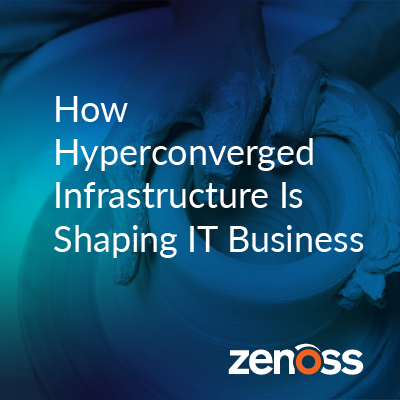
Helping Digital Transformation Initiatives
Today’s IT leaders are pushing boundaries while building transformative businesses by focusing on cloud, automation and scalability. In the process, many organizations face challenges as they seek to integrate a hyperconverged infrastructure mindset into their day-to-day IT operations. Hyperconverged infrastructure provides the flexibility for IT leaders to consolidate workloads, quickly scale operations, and offer services on demand. As they add new capabilities into the mix, monitoring applications along with other components becomes complicated. With seemingly endless applications and digital platforms used to deliver digital services in enterprises, adopting HCI helps reduce the cost of IT operations. Automating workflows in business applications like enterprise resource planning, business intelligence tools, analytics, database platforms, and other IT systems increases productivity and enables businesses to be agile while maintaining service-level agreements and delivery standards.
Delivering lean IT means eliminating boring, repetitive manual tasks. Hyperconverged infrastructure can reduce overall IT costs by providing a low-cost infrastructure with several automation features, spending much less time in provisioning, operating and managing IT assets. IT practitioners have to identify how information flows end to end and automate the common use cases to eliminate inefficiencies. As we discussed in our previous blog, migrating some applications to the hyperconverged cluster can be challenging, and IT Ops needs to maintain operational awareness of their new infrastructure without complicating their toolchains further. For instance, organizations integrating Nutanix into their IT environments are looking for a way to maintain visibility and control across both new and existing elements in their infrastructure landscapes.
Zenoss extends the capabilities of the Nutanix Prism interface by collecting detailed data points on Nutanix clusters, hosts, CVMs, storage pools and more. The Nutanix ZenPack maps out not only the Nutanix resources but also all associated mission-critical services they enable. This gives users the ability to see when and where issues are occurring, identify affected services that rely on Nutanix infrastructure, and quickly pinpoint and resolve issues hindering service delivery. Zenoss also maintains a rich history of these data points over time so system performance can be explored retrospectively. Its machine learning algorithm utilizes this historical data to identify anomalous behavior and help head off future issues before they occur.
To learn more about the certified Zenoss-Nutanix integration, read our white paper: How to Achieve Modern Monitoring for Nutanix Hyperconverged IT, or check out our joint webinar: How to Achieve Intelligent Monitoring for Hyperconverged IT.






